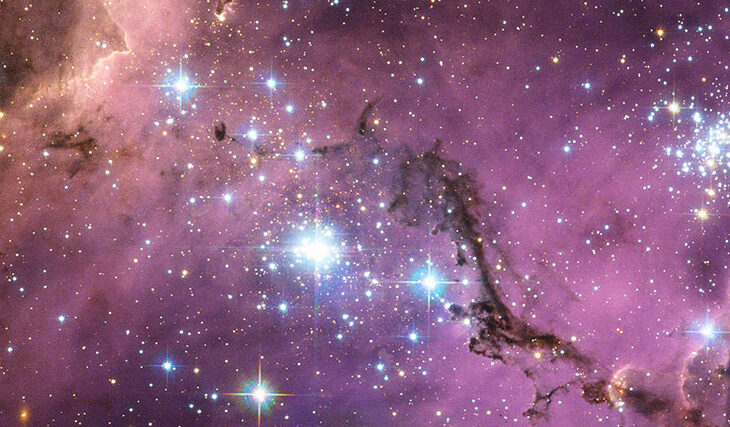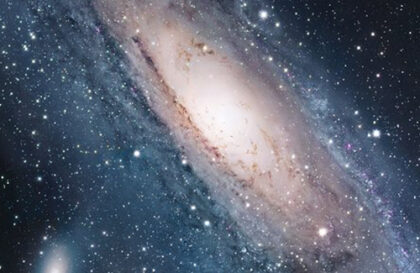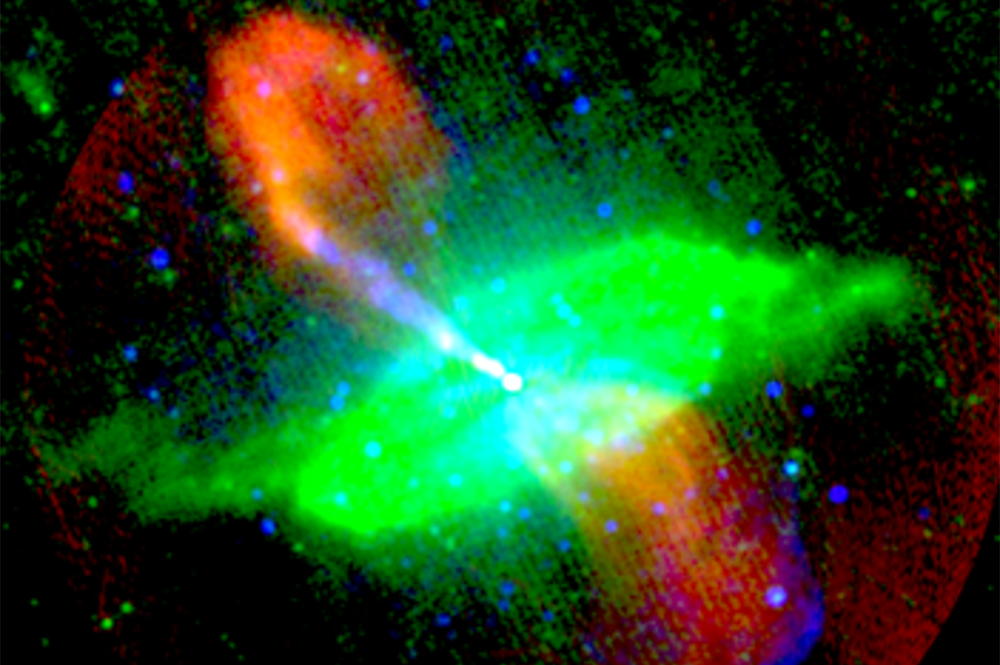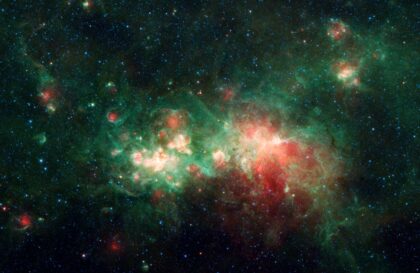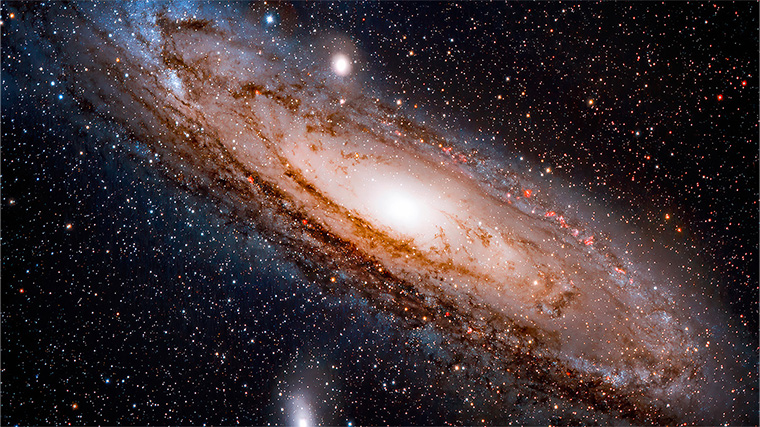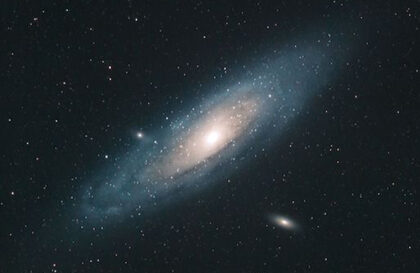The Large Magellanic Cloud (LMC) is a neighboring dwarf spiral galaxy in contact with the Milky Way and located at a distance of about 158,200 light-years from Earth. It is home to tens of millions of stars and is of interest to researchers involved in the origin of stars and the structure of galaxies. LMC is in the picture plane with us, which simplifies the observation and study of objects in it.
What is interesting about LMC?
The Large Magellanic Cloud (LMC) is a neighboring galaxy located in the southern hemisphere and named after Ferdinand Magellan. It is a large star cluster of about 30 billion stars, which is only a tenth of the number of stars in our galaxy. The LMC is also accompanied by the Small Magellanic Cloud, where there are about 1.5 billion stars.
One of the interesting features of the LMC is the presence of a giant gas and dust nebula known as the “Tarantula”. This nebula is located at the center of the LMC and was previously taken for a star in the constellation Dorado. If the Tarantula were at the same distance from us as the Orion Nebula (about 1500 light-years), its light would illuminate the Earth and create noticeable shadows.
In addition, in February 1987, an impressive event took place in the LMC – a supernova flashed, which could be observed with the naked eye.
The Large and Small Magellanic Clouds are connected by a bridge.
A study published in the journal Monthly Notices of the Royal Astronomical Society reveals that the Large and Small Magellanic Clouds, satellites of the Milky Way, are connected by a stellar bridge spanning 43,000 light-years. This bridge was formed as a result of tidal processes caused by the gravitational interaction between galaxies.
Under the influence of gravity, some of the stars of the Small Magellanic Cloud were pulled into the stellar stream towards the Large Magellanic Cloud, and part of the stellar bridge was formed from stars stretched from the Large Magellanic Cloud towards the Milky Way. This phenomenon is known as the Magellanic Bridge and the Magellanic Stream, and they link both galaxies, as well as the Small Magellanic Cloud, to the south pole of the Milky Way.
Interesting facts about LMC
Supernova SN 1987A erupted in the Large Magellanic Cloud in 1987. It is the closest supernova to us since SN 1604.
The LMC contains a well-known hotbed of active star formation, 700 light-years across, the Tarantula Nebula.
The most massive and brightest star in the LMC is the Wolf-Rayet star, which has a mass equal to 265 solar masses. The star’s surface temperature is over 40,000 Kelvin and is 8.7 million times brighter than the Sun. Such superheavy stars are extremely rare.
The galaxy’s largest star, WOH G64, is also one of the largest known to science. Its radius is approximately 1540 solar radii. If WOH G64 is placed in the center of the solar system, then the surface will reach the orbit of Saturn. The star is also surrounded by a dense torus of dust and gas.
The LMC shines 10 times fainter than the Milky Way but is its brightest companion of two dozen satellite galaxies. Due to its gravity, the LMC pulls millions of stars from the Small Magellanic Cloud (LMC) towards it. There are several thousand orange and red giants in the galaxy, aging stars that are larger, brighter, and colder than the Sun. About 5% of these stars have very special speed characteristics: they rotate at an angle of 54 degrees to the LMC plane, and also in the opposite direction compared to the bulk of the stars. The chemical composition of these stars also differs: in terms of the percentage of iron, they correspond to the MMO.
About 700 million years ago, the Large Magellanic Cloud at a speed of 327 km per second passed the Milky Way at a distance of about 50 kpc. The effect of approaching this small galaxy is still being felt. As a result of the gravitational attraction from the dark matter halo of the Large Magellanic Cloud, the disk of the Milky Way is stretched and twisted, due to which the speed of movement of its constituent objects in the direction of the constellation Pegasus is 32 km per second.
The Milky Way itself does not move in the direction of the Large Magellanic Cloud, but towards a point that marks the former position of this galaxy in the sky. The Large Magellanic Cloud is moving away from the Milky Way at a speed of about 370 km per second.
What’s next for LMC?
Some of the stars in the Large Magellanic Cloud (LMC) were originally in the Small Magellanic Cloud (LMC) and were “caught” by the gravitational forces of the LMC. According to calculations by scientists from the Institute for Computational Cosmology at Durham University, the LMC is currently moving away from the Milky Way. The next turn in the fate of these galaxies will come in about 1 billion years when they turn around and start moving towards the center of our Galaxy. Here, within about 1.5 billion years, they will merge. This process will also increase the size of the Milky Way’s central supermassive black hole, known as Sagittarius A*, by a factor of 10.
After 4.2 billion years, the Milky Way will merge with its satellites – the Large and Small Magellanic Clouds. However, according to recent studies, the mass of the Milky Way is comparable to the mass of the Andromeda Nebula. This means that a collision between these two galaxies, rather than an absorption, is more likely to occur. As a result of this collision, the solar system may be ejected from the Milky Way into intergalactic space.
Image credit:
https://www.nasa.gov
https://www.nasa.govl
